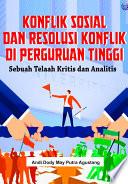This Mining Environment Management Manual is developed for the benefit of the entire mining industry in the Country. The Manual has been designed in such a manner that it can be easily used by the engineers and environmentalists in the mining complexes in their efforts for the management of mining environment. The Manual presents the existing status and comprehensive overview of all the aspects of mining environment. Since environment is a developing subject the user of the Manual is suggested to, wherever necessary, consult the web-sites of MOEF and other concerned organizations for the latest status. The manual in nineteen chapters outlines the following for the benefit of the users. 1. Broad details of the mineral mining industry in the country. 2. Policies, legislation, standards and procedures for establishing and operating the mines covering an environmental overview of the national policies and the policies of the mining companies, mining and environmental legislations and standards, site selection, environmental clearance, forestry clearance, and the various formats to be filled or establishing and operating the mines. 3. Preparation of the environmental management plans (EMPs) of the mining projects. 4. Environmental monitoring. 5. Mining methods commonly used in the Indian coal and non-coal mineral industry. 6. Environmental impacts of mining on society, ecology, land, water regime and atmosphere. 7. Environmental impact assessment (EIA). 8. Environmental management measures required in mineral mining including the assessment of quality of life, development of R&R packages, development of surface and underground water bodies, replantation of trees, formation and management of soil and overburden dumps, environmental aspects of blasting, land reclamation and rehabilitation planning, mine fires, acid mine drainage, inundation, noise modeling, etc. 9. Mine closure comprising of legislative and social necessity of mine closure in the Indian context, mine closure planning for underground and opencast mines, and format for mine closure planning in project report. 10. Procedure for environmental performance auditing and evaluation. 11. Land acquisition and optimization of land requirement for mining and associated activities, and rehabilitation and resettlement. 12. Land use planning in mining areas. 13. Risk assessment and disaster management. 14. Environmental aspects of tailing storage. 15. Use of geographical information system in environmental management in mining areas. 16. Utilization of fly ash in mines. 17. Environmental economics. 18. Roles of executives in environmental management in mining areas. 19. Do's and don'ts in environmental management planning and implementation. The manual in simple English aims at to attract attention of one and all concerned with the management of mining environment. The manual will be useful to the following categories of the people in the mining complexes in the Country and Abroad. · Mine planners in planning and designing of the mining activities and integration of environmental management measures in the mining methods. · Mine operators in implementing the environmental management measures, monitoring and compliance of legislation. · Regulatory agencies and their executives in developing a better understanding of the mining environment related aspects and implementing the legislation. · Research workers in planning, designing, and undertaking research and development activities. · Educationists in imparting the knowledge and know-how to the participants in various academic and human resource development programs. · The Non-Governmental Organizations (NGOs) in developing a better understanding of the mining environment and assisting the mineral industry in effective implementation of the environmental management efforts. · The people in the mining complexes in developing the understanding of various aspects of the management of mining environment. In addition the Manual will be an important addition to the knowledge base in the libraries of all the institutions and organizations associated with mining and environmental management. The user is advised to read the Manual carefully and understand the various topics discussed and then use their own wisdom and the suggestions made in the Manual in design, planning, implementation and monitoring of the mining activities. The legislative aspect of mining environmental management is dynamic and time to time changes are made in the Acts. Rules and Regulations by the Central and State Governments. The user is therefore advised to get abreast with the latest developments through the web-sites of the MOEF and the Central and State Pollution Control Boards and other regulatory agencies, e.g., DGMS, IBM, etc.
Infrastructure, Medical, Educational and other Social Welfare Facilities In the underdeveloped areas when the mining activities commence there is definitely an improvement in the infrastructure, medical, educational and other social ...









